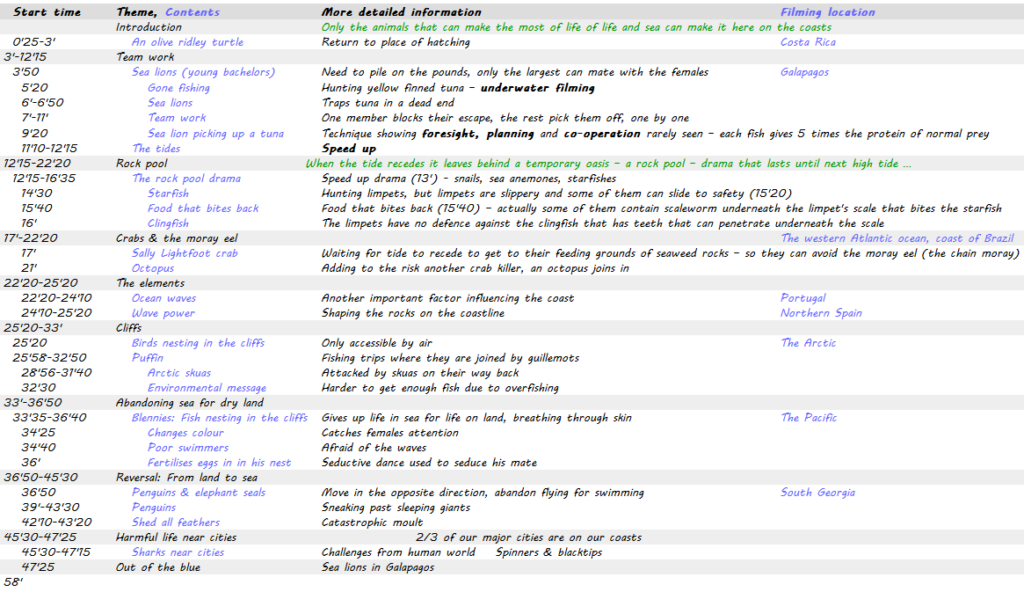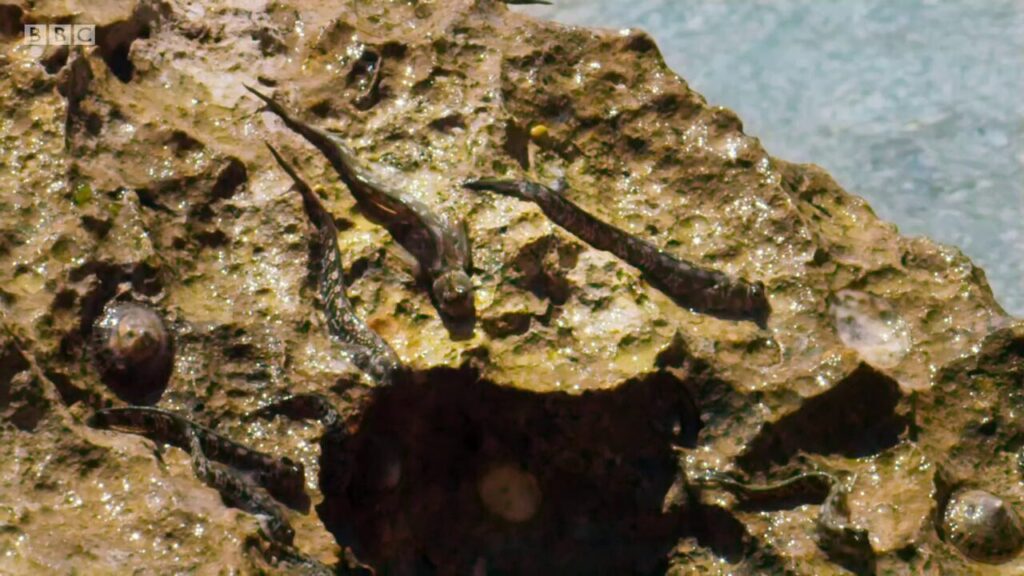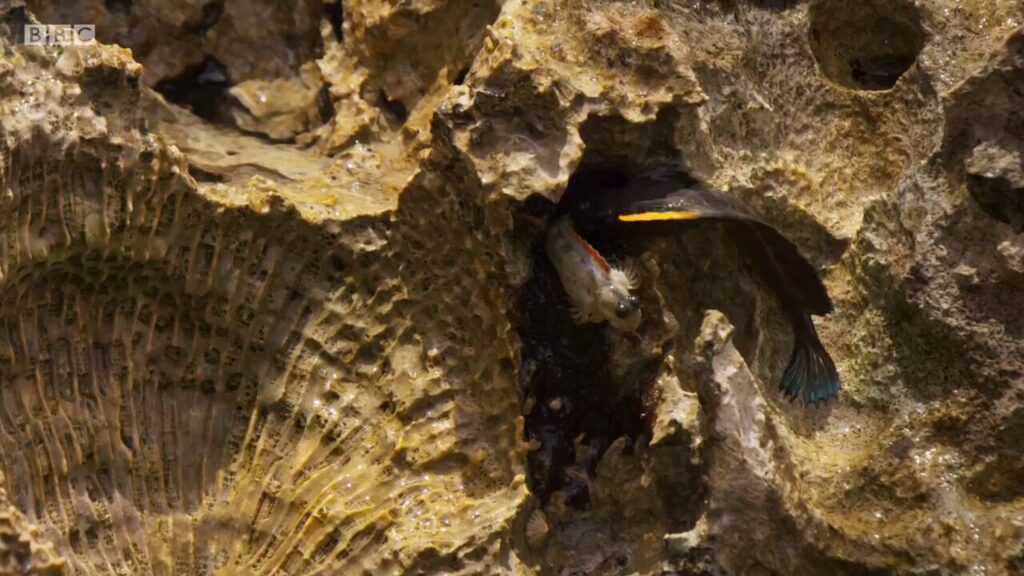Original air date: 3 December 2017

| Start time | Theme, Contents | More detailed description (Filming location) |
|---|---|---|
| 0’25-3′ | Introduction | Return to place of hatching |
| 0’25 | An olive ridley turtle | Return to place of hatching |
| 2’50 | Introductory words | Only the animals that can make the most of life of life and sea can make it here on the coasts (Costa Rica) |
| 3′-12’15 | Teamwork | |
| 3’50 | Sea lions | Need to pile on the pounds, only the largest can mate with the females — (Galapagos) |
| 5’20 | Gone fishing | Hunting yellow finned tuna – underwater filming |
| 6′ | Sea lions | Trap tuna in a dead end |
| 7′ | Team work | One member blocks their escape, the rest pick them off, one by one |
| 9’20 | Sea lion | Their technique of picking up the tuna shows foresight, planning and co-operation rarely seen – each fish gives 5 times the protein of normal prey |
| 11’10-12’15 | The tides | Speed up |
| 12’15-22’20 | Rock pool | When the tide recedes it leaves behind a temporary oasis – a rock pool – drama that lasts until next high tide … |
| 12’15-16’35 | Rock pool drama | Speed up drama (13′) – snails, sea anemones, starfishes |
| 14’30 | Starfish | Hunting limpets, but limpets are slippery and some of them can slide to safety (15’20) |
| 15’40 | Food bites ! | Food that bites back (15’40) – actually some of them contain scaleworm underneath the limpet’s scale that bites the starfish |
| 16′ | Clingfish | The limpets have no defence against the clingfish that has teeth that can penetrate underneath the scale |
| 17′-22’20 | Crabs & the moray eel | The crabs (being more at home in sea than on land) seem to avoid the sea, the moray eel is reason enough !!! — (The Atlantic coast of Brazil) |
| 17′ | Sally Lightfoot crab | Waiting for tide to recede to get to their feeding grounds of seaweed rocks – so they can avoid the moray eel (the chain moray) |
| 21′ | Octopus | Adding to the risk another crab killer, an octopus joins in |
| 22’20-25’20 | The elements | |
| 24’10 | Ocean waves | Another important factor influencing the coast — (Portugal) |
| 24’10 | Wave power | Shaping the rocks on the coastline — (Northern Spain) |
| 25’20-25’20-33′ | Cliffs | |
| 25’20 | Birds | By nesting in the cliffs they are only accessible by air — (The Arctic) |
| 25’58-32’50 | Puffins | Fishing trips where they are joined by guillemots |
| 28’56-31’40 | Arctic skuas | Attacked by skuas on their way back |
| 32’30 | Environmental message | Harder to get enough fish due to overfishing |
| 33′-36’50 | Abandoning sea for dry land | |
| 33’35-36’40 | Blennies: Fish nesting in the cliffs | Gives up life in sea for life on land, breathing through skin — (The Pacific) |
| 34’25 | Changes colour | Catches female’s attention |
| 34’40 | Poor swimmers | Afraid of the waves |
| 36′ | Fertilises eggs in in his nest | Seductive dance used to seduce his mate |
| 36’50-45’30 | Reversal: From land to sea | |
| 36’50 | Penguins & elephant seals | Move in the opposite direction, abandon flying for swimming — (South Georgia) |
| 39′-43’30 | Penguins | Sneaking past sleeping giants |
| 42’10-43’20 | Shed all feathers | Catastrophic moult |
| 45’30-47’25 | Harmful life near cities | 2/3 of our major cities are on our coasts |
| 45’30-47’15 | Sharks near cities | Challenges from human world – Spinners & blacktips |
| 47’25 | Out of the blue | Sea lions in Galapagos |
Selected material
Fish avoiding water (blennies)


The fish seems to actually avoid the waves

Here is a brilliant piece about them